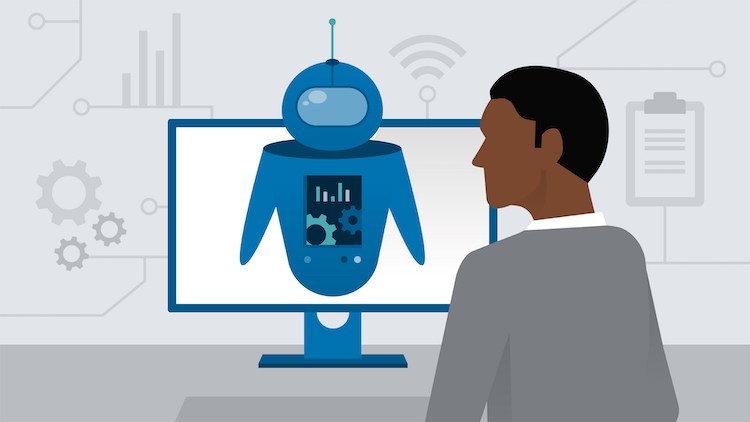
What is Robotic Process Automation?
The inevitable reality of the business world is that it is constantly undergoing evolution. The main engine of these changes can be found in the continuous search to acquire a competitive advantage. The company that is capable of providing the most efficient solutions to the needs of its customers is the one that you will find capturing the market. The search for efficiency has become a race to transfer activities to machines that can perform them quickly and with a minimum number of errors, freeing people’s time so that they can focus on strategic activities. This is the perfect way of taking advantage of human creativity to improve business instead of occupying them in repetitive activities.
The new digital age brings with it a future in which machines learn from human beings and as they become better in their work, their demand and permeability in the day to day operations of companies will be more prevalent. Although this technology is still in a stage of development, it has already borne its first fruits through Robotic Process Automation (RPA). The robots, in this case, are not physical, but an evolution of the software. The objective is forceful with the rest of the ideology of this revolution, allowing the automation of portions of processes that do not require human judgment.
The focus of this article is Robotic Process Automation, providing a context regarding what can be expected from this technology as well as how it can benefit humanity.
What Is Robotic Process Automation?

Although the applications of robotics have grown by leaps and bounds in recent times, they still have a long way to go. We are currently talking about RPA as a method of automating processes that are mainly transactional in nature and are based on specific rules. In this case, we are not talking about a physical robot like the one we install in a manufacturing line, but we refer to software that learns from a business user and assists with relatively simple tasks, such as RPA Solutions | Robotic Process Automation | Fortra RPA. It also uses logical and pre-built rules to deliver results. It is made up of macros with the ability to perform multiple functions through multiple platforms. It is a flexible tool that adapts to the current processes of each company and works by interacting and imitating human beings who execute the process.
Robotic Process Automation has the following parts to carry out its tasks:
- It has a bot, which is software that can execute repetitive tasks. A simple programming language operates it, or you have an option to record the actions of a user such as copying, pasting or consulting databases and then execute them based on an established calendar.
- It has a system interface which is integrated into the graphics interface of each user, facilitating the possibility of getting quick feedback without compromising on the IT infrastructure.
- The RPA client can be installed on the computer of each user or in virtual environments, which allows flexibility to deploy robots on equipment (laptops, PC, etc.) or in virtual machines that generate savings in hardware costs.
- It is software compatible with a different number of platforms. In general, RPA has the same access to a system than a human being.
With these four parts, the RPA system can open emails with attachments, connect to web applications, move files and folders, copy and paste, fill out forms, read and write on databases, follow rules and execute decisions with base in predetermined scenarios, collect statistics of social networks, extract structured data from documents and much more. It can also perform calculations, connect application interfaces and internet information, etc.
The sum of these activities allows for the execution of cutting-edge processes practically without the intervention of human beings.
Processes Susceptible to Automation
It is important to remember that RPA applications require human input to execute their functions and it is essential in order to carry out their chores. This speaks of one of the largest limitations of RPA, which is that they cannot carry out activities that require them to issue a judgment. Even so, its value should not be minimized because when executing transactional processes or activities with high precision, it allows people to dedicate themselves to more strategic work.
As previously alluded to, an RPA platform has greater impact when applied to processes with multiple transactional activities, processes that have activities common or requiring coordination of various functions. RPA affects roles where precision in repetitive tasks is essential such as accounting, accounts payable and other financial processes.
Roles Of RPA

In order to implement an RPA within the business functions, organizations should adapt to both its technological structure and its human structure. They must modify the current roles and adopt as well as implement new ones. In terms of organization, it is necessary to have five factors that will allow you to get the best results:
- Process developers that indicate the tasks that the RPA must develop
- A robot manager that assigns and monitors chores
- The robot that is the software installed in the work environment and that interacts directly with business applications
- The users who solve the incidents or situations that the robot scales
- The application or platform through which the robot interacts with the user
Therefore, these factors play a major role in order to ensure that a Robotic Process Automation task is carried out securely and smoothly.
Benefits Of RPA
In addition to the possibility of adding controls and increasing the efficiency of the processes, other benefits can be associated with RPA such as standardization, time optimization of delivery with a low cost of implementation. This goes a long way to reducing the ROI period. This opens new doors to the use of “insourcing” in processes, which gives greater control over the model of delivery of services. It also improves the quality and consistency of the data, which is seen in improvements in “analytics” and income.
Conclusion
Hence, as can be seen, the field of robotics has come a long way, and RPA is bound to grow even further, permeating into more and more industries in the future.




